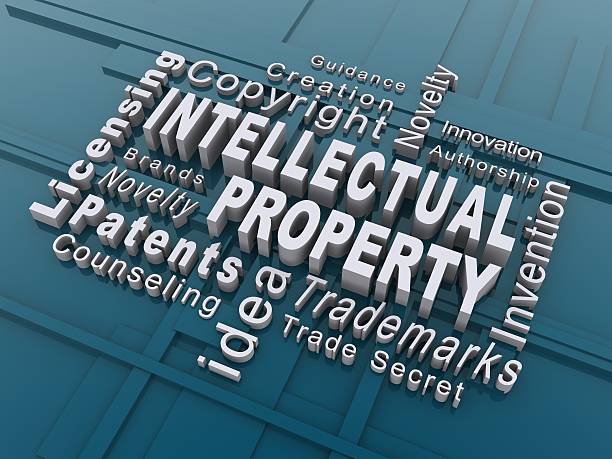In the ever-evolving landscape of technology, Artificial Intelligence (AI) has emerged as a transformative force across industries. One area where AI is making significant strides is in Intellectual Property (IP) rights management. As the digital era continues to reshape how businesses operate and create value, the synergy between AI and IP rights management is becoming increasingly evident. This article explores the intersection of AI and IP, delving into the ways in which AI technologies are revolutionizing the management and protection of intellectual property.

The Evolving Landscape of Intellectual Property
Intellectual Property encompasses a broad spectrum of intangible assets, including patents, trademarks, copyrights, and trade secrets. These assets are the lifeblood of innovation and economic progress, driving competition and incentivizing creativity. However, the management and protection of intellectual property have historically been complex and resource-intensive processes.
With the rise of the digital age, the challenges facing IP rights management have multiplied. The ease of information sharing and the global nature of digital transactions have created new opportunities for infringement and counterfeiting. Additionally, the sheer volume of intellectual property generated in the digital era has strained traditional management systems.
In response to these challenges, the integration of AI into IP rights management has emerged as a solution that not only streamlines processes but also enhances the efficacy of protecting intellectual property in a dynamic and interconnected world.
Automating IP Search and Analysis
One of the fundamental aspects of IP rights management is the ability to conduct thorough searches to ensure that a proposed innovation does not infringe on existing patents or trademarks. Traditionally, this process has been time-consuming and prone to human error. AI, however, brings a new level of efficiency and accuracy to this critical phase.
Machine learning algorithms can analyze vast databases of existing patents and trademarks, rapidly identifying similarities and differences. This not only expedites the search process but also reduces the likelihood of overlooking relevant prior art. AI’s ability to recognize patterns and relationships within large datasets enables a more comprehensive analysis of the IP landscape, empowering innovators with valuable insights before embarking on new projects.
Enhancing Patent Drafting and Prosecution
The patent application and prosecution process is another area where AI is proving to be a game-changer. Drafting a robust patent application requires a deep understanding of both the invention and the legal intricacies of patent language. AI-powered tools can assist inventors and legal professionals in crafting well-structured and legally sound patent applications.
Natural Language Processing (NLP) algorithms enable AI systems to analyze and generate human-like text, making it easier to articulate complex technical concepts in a manner that aligns with patent office requirements. AI can also assist in evaluating the likelihood of a patent being granted by predicting the outcomes based on historical data and existing precedents.
Furthermore, during the prosecution phase, AI can help in automating routine tasks such as responding to office actions and managing deadlines. By reducing the administrative burden on patent professionals, AI allows them to focus on more strategic aspects of IP management, ultimately improving the overall quality and efficiency of the patent process.

Monitoring and Enforcement in the Digital Age
The digital era has not only facilitated the creation and dissemination of intellectual property but has also given rise to new challenges in terms of monitoring and enforcement. AI technologies provide powerful tools for tracking and identifying potential infringements across various online platforms.
Machine learning algorithms can analyze vast datasets, including social media, e-commerce websites, and other online forums, to detect instances of potential IP infringement. Automated monitoring systems can continuously scan for unauthorized use of trademarks, copyrighted material, or patented technologies, providing real-time alerts to rights holders.
Moreover, AI can assist in the prioritization of enforcement efforts by assessing the severity and impact of potential infringements. This enables rights holders to allocate resources effectively, focusing on the most critical cases that pose a significant threat to their intellectual property.
Customizing IP Strategies with Predictive Analytics
Predictive analytics, powered by AI, is reshaping how businesses formulate and execute their intellectual property strategies. By analyzing historical data, market trends, and legal precedents, AI systems can generate insights that inform strategic decision-making.
For example, predictive analytics can help businesses anticipate potential areas of future innovation, allowing them to proactively secure patents in emerging technology fields. This forward-looking approach enables organizations to stay ahead of the competition and establish a stronger intellectual property portfolio.
AI can also assist in identifying potential licensing opportunities by analyzing the IP landscape and uncovering areas where cross-licensing or collaboration could be mutually beneficial. This data-driven approach to IP strategy enhances the agility and adaptability of businesses in a rapidly changing technological landscape.
Addressing Ethical and Legal Challenges
While the integration of AI into IP rights management brings about numerous benefits, it also raises ethical and legal considerations. One of the primary concerns is the potential bias in AI algorithms, which could result in discriminatory outcomes, especially in the context of patent examination or trademark evaluation.
Efforts are being made to ensure that AI systems used in IP management are trained on diverse datasets to minimize biases. Additionally, transparency and accountability in AI decision-making processes are crucial to maintaining trust in the intellectual property system.
The legal landscape is also evolving to accommodate the use of AI in IP. As AI-generated inventions become more prevalent, questions arise regarding the attribution of inventorship and the eligibility of AI systems to be named as inventors on patents. Legal frameworks are being adapted to address these novel challenges, ensuring that the benefits of AI in IP are harnessed responsibly and ethically.
Collaboration between Humans and AI in IP Management
A crucial aspect of the successful integration of AI into IP rights management is the collaborative relationship between humans and machines. While AI excels at processing and analyzing vast amounts of data, human judgment, creativity, and contextual understanding remain irreplaceable.
Legal professionals and innovators play a pivotal role in guiding AI systems, ensuring that the technology aligns with legal requirements and ethical standards. The human element in IP management is essential for making nuanced decisions, interpreting the broader implications of intellectual property strategies, and adapting to the evolving legal landscape.
AI should be viewed as a tool that augments human capabilities, allowing professionals to focus on high-value tasks that require creativity, critical thinking, and strategic decision-making. The synergy between humans and AI in IP management represents a harmonious partnership that leverages the strengths of both to achieve more effective and efficient outcomes.
The Future Landscape of AI in IP Rights Management
As technology continues to advance, the future landscape of AI in IP rights management holds exciting possibilities. The refinement of AI algorithms, coupled with advancements in machine learning and natural language processing, will further enhance the capabilities of AI systems in analyzing and managing intellectual property.
One promising avenue is the use of blockchain technology in conjunction with AI for secure and transparent IP management. Blockchain’s decentralized and tamper-resistant nature can enhance the integrity of intellectual property databases, reducing the risk of fraud and ensuring a reliable record of ownership.
Additionally, the evolution of AI-powered virtual assistants for legal professionals specializing in intellectual property is on the horizon. These virtual assistants could streamline routine tasks, provide real-time updates on IP-related developments, and offer insights to support strategic decision-making.
The intersection of AI and IP rights management is a dynamic space, with ongoing research and development shaping the future of how intellectual property is created, protected, and leveraged. It is a testament to the adaptability of the legal and technological landscape, where innovation begets innovation in a continuous cycle of progress.
Conclusion
The marriage of AI and IP rights management is not just a technological partnership; it is a strategic alliance
that empowers businesses, inventors, and legal professionals to navigate the complexities of the digital age. From automating search and analysis processes to enhancing patent drafting, monitoring, and enforcement, AI is reshaping every facet of intellectual property management.
As we move forward, the collaborative interplay between humans and AI will be pivotal in ensuring that intellectual property systems remain equitable, transparent, and adaptive. The ethical considerations surrounding AI in IP management must be addressed proactively, and legal frameworks should evolve to accommodate the dynamic nature of technology.
The journey of AI and IP rights management is an ongoing exploration, marked by innovation, challenges, and opportunities. By embracing the potential of AI while upholding the values of fairness and responsibility, we can harness the full benefits of this technological revolution, creating a future where intellectual property is not only protected but thrives in the ever-expanding realm of possibilities.

Leave a Reply